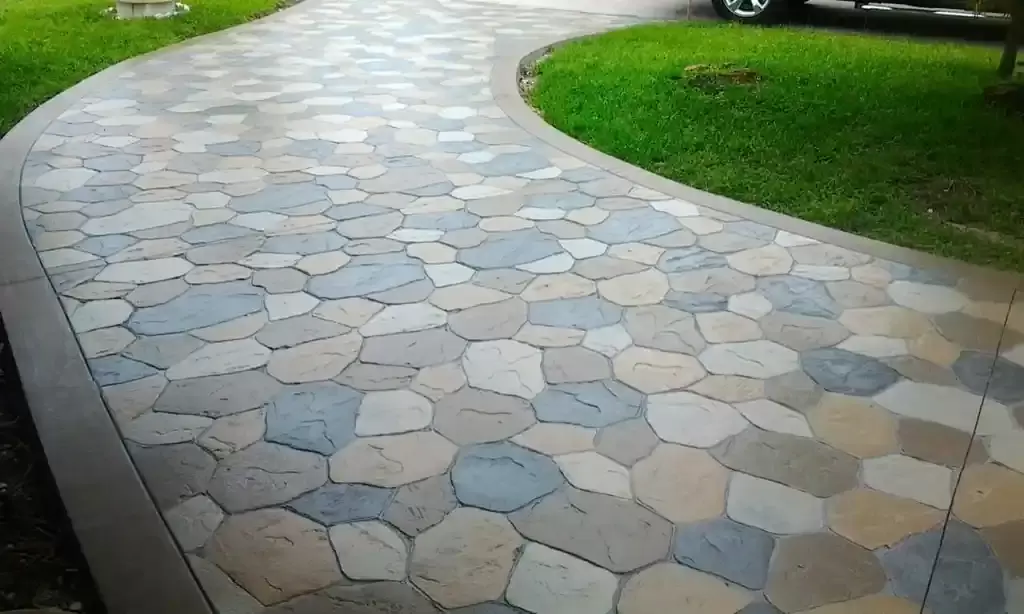 When it comes to creating stunning outdoor surfaces that seamlessly blend beauty and functionality, stamped concrete stands out as a remarkable choice. The process behind stamped concrete is not just artistic but also rooted in scientific principles that result in durable and aesthetically pleasing structures. In this article, we'll take you on a journey into the science of stamped concrete, exploring both its visual and textural aspects. Visual Mastery: Replicating Nature's Aesthetics
Stamped concrete is an ingenious technique that allows for the replication of various natural materials, including stone, wood, and brick, onto concrete surfaces. This is achieved through the use of meticulously crafted molds or stamps, each designed to emulate the unique texture and appearance of the chosen material. From cobblestone streets to intricate wood grains, stamped concrete can transform a plain slab into a work of art that mirrors the beauty of nature. The Chemical Composition: Stamping with Precision Behind the scenes of stamped concrete lies a careful chemistry that ensures the durability and longevity of the finished product. The concrete mix used for stamping goes beyond the standard blend. It's designed with precision, taking into account factors like water-cement ratio, aggregate size, and the use of admixtures. This tailored mixture not only enhances workability for stamping but also contributes to the concrete's strength and resistance against wear and tear. Color Magic: Pigments and Release Agents While the textural replication is key, the color dimension of stamped concrete is equally vital. Pigments are added to the concrete mix to infuse it with a base color, often resembling the chosen natural material. But the magic doesn't stop there. Release agents are applied to the surface just before stamping. These agents prevent the stamps from sticking to the concrete while creating subtle color variations, highlighting the textures and providing depth to the design. The Role of Texture Mats: Creating Realism Texture mats, the heart of the stamping process, are what bring the visual realism to life. These mats are carefully crafted to resemble the textures of natural materials, down to the smallest details. As the concrete is stamped, the mats leave behind impressions that mimic the texture of stones, pavers, or any chosen pattern. This combination of color and texture produces a finished surface that is both visually captivating and tactilely authentic. Durability through Science: Engineering for Longevity Beyond its visual and textural allure, stamped concrete's science extends to its structural integrity. Reinforcement techniques, such as the addition of fiber or wire mesh, enhance the concrete's ability to withstand heavy loads and prevent cracking. Additionally, sealants are applied to protect the stamped surface from harsh weather conditions and the effects of wear over time. This scientific approach ensures that your stamped concrete features remain resilient and beautiful for years to come. A Seamless Blend of Art and Science In conclusion, stamped concrete is a testament to the harmonious blend of artistic design and scientific principles. From its careful chemical composition to the intricacies of creating realistic textures, every step of the process is backed by knowledge and expertise. The result is a visually stunning and long-lasting surface that not only enhances your outdoor spaces but also showcases the mastery of both art and science. As you consider the possibilities of stamped concrete for your next project, remember that the magic lies in the intricate science behind it. Whether you're aiming to replicate the warmth of wood, the elegance of stone, or the charm of brick, stamped concrete offers a visual and textural journey that truly brings your vision to life. Contact or call us for more information!
0 Comments
Leave a Reply. |
Archives
October 2023
Categories |
 RSS Feed
RSS Feed